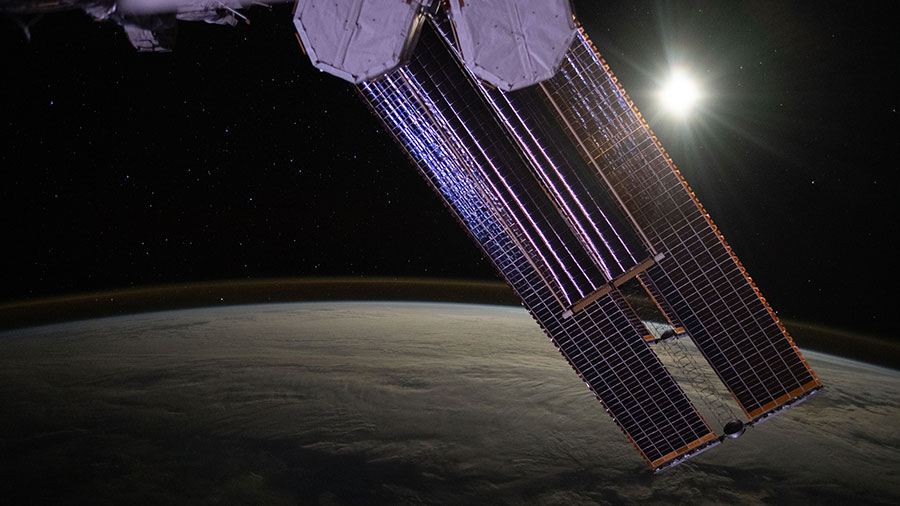
Tuesday was a light duty day aboard the International Space Station for some of the crewmates as the rest of the orbital residents explored biotechnology and fluid physics while maintaining life support systems. Back on Earth, a new cargo craft stands ready to resupply the orbital outpost following the departure of another resupply spacecraft late Monday.
Studying stem cells in microgravity eliminates the challenges of growing and reproducing cells in Earth’s gravity environment. However, the space-borne results of stem cell research may have far-reaching Earth-bound benefits including advanced cellular manufacturing processes and improved human health.
NASA Flight Engineer Tracy C. Dyson explored how to grow stem cells in space today servicing samples inside the Kibo laboratory module’s Life Science Glovebox. Afterward, she peered at the stem cell specimens with the state-of-the-art Kermit microscope that can be operated by a station crew member or remotely by scientists on the ground. NASA astronauts Matthew Dominick and Jeanette Epps spent a few moments during their light duty day assisting Dyson with the glovebox work and the microscope set up.
NASA’s Commander for the Boeing Crew Flight Test Butch Wilmore worked throughout the day checking water systems and replacing components on thermal control hardware. He first collected drinking water samples, processed those samples, then analyzed them using the total organic compound analyzer. Next, Wilmore worked inside the Tranquility module replacing gear that cools equipment and rejects heat.
NASA astronauts Mike Barratt and Suni Williams also had a light schedule on Tuesday with the duo periodically swapping out orbital plumbing gear and training to use advanced life support systems.
A Roscosmos Progress 89 cargo spacecraft is due to launch from the Baikonur Cosmodrome in Kazakhstan at 11:20 p.m. EDT on Wednesday. It will take a day a two-day trip to the orbital outpost where cosmonauts Oleg Kononenko and Nikolai Chub will be monitoring its automated approach and docking planned for 1:56 a.m. on Saturday. The Progress 89 will dock to the Zvezda service module’s rear port that was vacated at 10 p.m. on Monday after the Progress 87 space freighter undocked and completed its six-month resupply mission.
Kononenko started Tuesday transferring water from the docked Progress 88 cargo craft into station water tanks. He then joined Chub for a videotaped session answering questions submitted by media outlets from their home country. Chub earlier spent his day exploring how magnetic and electrical fields affect fluids in microgravity. Flight Engineer Alexander Grebenkin began his day downloading data that captures how international crews and mission controllers interact with each other. Afterward, Grebenkin pointed a digital camera toward Earth and took photographs using hyper-spectroscopy to study the effects of natural and man-made disasters.
Learn more about station activities by following the space station blog, @space_station and @ISS_Research on X, as well as the ISS Facebook and ISS Instagram accounts.
Get weekly video highlights at: https://roundupreads.jsc.nasa.gov/videoupdate/
Get the latest from NASA delivered every week. Subscribe here: www.nasa.gov/subscribe
